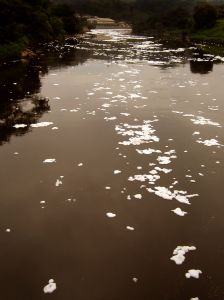The report is published today (30 September) in the journal Nature. It is the first to simultaneously map the effects of pollution, dam building, agricultural runoff, the conversion of wetlands and the introduction of exotic species on the health of the world's rivers, said Professor Peter Davies, Director of UWA's Centre of Excellence in Natural Resource Management.
The grim portrait of the world's rivers shows that nearly 80 per cent of the world's human population live in areas where river waters are highly threatened, posing a major threat to human water security and resulting in aquatic environments where thousands of species of plants and animals are at risk of extinction.
The study, Nature's cover story, is the first to explicitly assess both water security and biodiversity in parallel. Fresh water is widely regarded as the world's most essential natural resource, underpinning human life and economic development as well as the existence of countless organisms ranging from microscopic life to fish, amphibians, birds and terrestrial animals of all kinds.
Professor Davies is also part of a team working to identify sustainable and culturally appropriate use of the tropical rivers and estuaries of northern Australia in collaboration with the region's Indigenous people.
The national Tropical Rivers and Coastal Knowledge (TRaCK) initiative, of which The University of Western Australia is a member, aims to ensure 55 catchments and rivers between Broome and Cape York are developed and managed in a truly sustainable way. The initiative could be one of the most geographically wide-ranging projects in the world.


